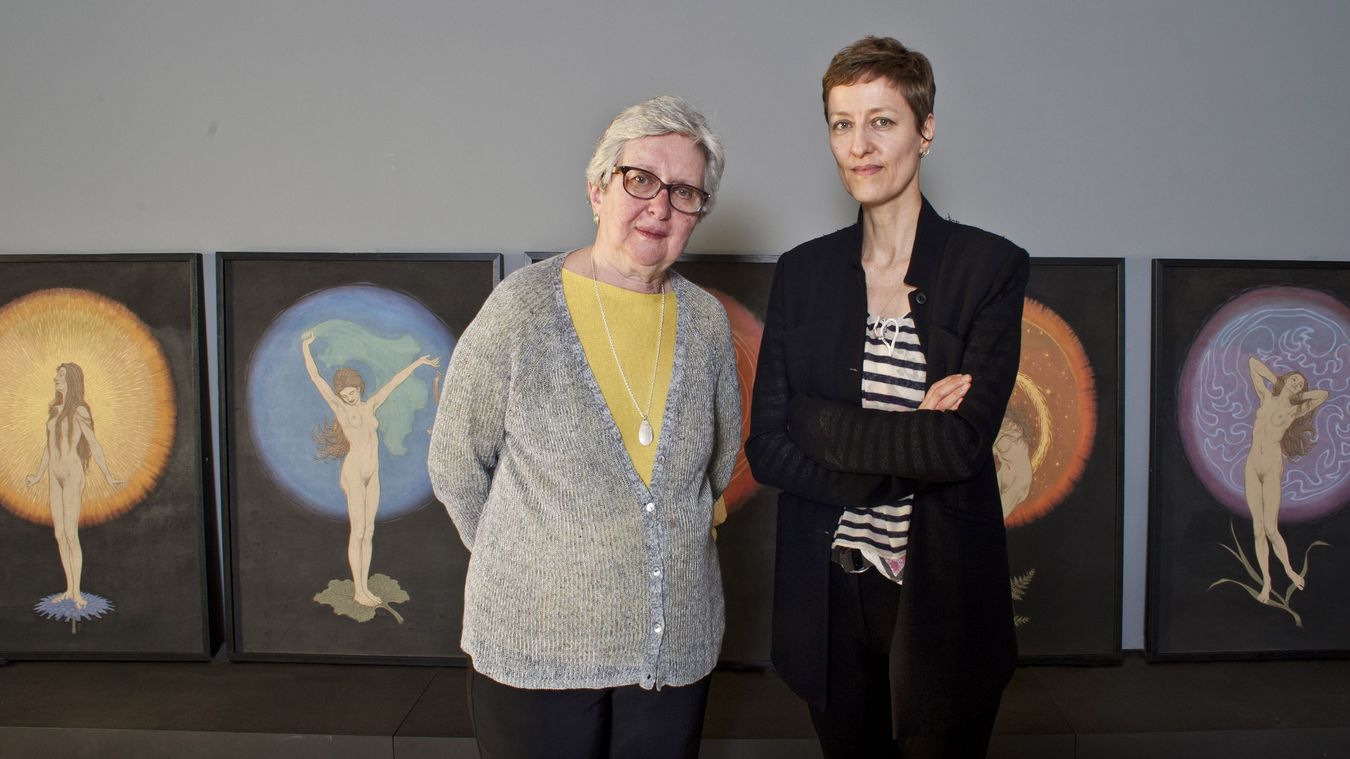![[Translate to English:] Berlinische-Galerie-Museum-Berlin-Depot Photo: Visitors during a guided tour of the museum depot. They are looking at a work of art on a grid.](/assets/_processed_/6/a/csm_Museum-Berlin_Depot_36_d91a6347ad.jpg)
![[Translate to English:] Berlinische Galerie-Museum-Berlin- Depotführung Photo: Several adults look at a work of art on a table.](/assets/_processed_/2/8/csm_Museum-Berlin_Restauration_68_735bebcc27.jpg)
The depot
A high-tech treasure chest
Most of us probably imagine a museum depot to be a dusty place where time stands still and almost nobody ever enters. But this image has nothing to do with the reality of a modern-day museum. The depot in a museum that mounts international art exhibitions and loans or borrows works across borders is an air-conditioned high-security wing guarded around the clock. That also goes for the depot at the Berlinische Galerie. Equipped with cutting-edge technology to control ambient conditions, secure the premises against theft and prevent fire, this is a zone of 3,000 square metres housing well over 200,000 works. Warehouse systems such as rolling racks, motor-driven compact units and digital facility management ensure optimum handling. Museums constantly acquire more works, so as the years go by space fills up and new solutions have to be devised to store all the holdings.
Naturally, however, a depot – for all the digital management – is still a mysterious and poetic place. A plethora of potential exhibitions lie slumbering here. Some works have been waiting years to be rediscovered and shown in a future context, or at least photographed. By the way: selected holdings from the Berlinische Galerie, including major items from our Fine Arts Collection, have already been included in a huge digital project. You can study them in our Collection Online.
Research in our Collection Online![[Translate to English:] Museum-Berlin_Kunst_Restauration Photo: Person holding a brush in front of a painting.](/assets/_processed_/2/c/csm_Museum-Berlin_Kunst_Restauration_42_a6674af968.jpg)
![[Translate to English:] Berlinische-Galerie-Museum-Berlin-Restauration Photo: Person with magnifying glasses looking at a work of art with brush in the hand. Behind on the wall frames and artworks.](/assets/_processed_/d/1/csm_Museum-Berlin_Restauration_67_2a34d71c30.jpg)
Restoration
A lot can happen in the life of an art work, especially when it is a few years old. Oil paintings with chips, plastic objects slowly warping, collages falling apart, photographs with figures too faded to recognise – these are the difficulties resolved by the restoration team at the Berlinische Galerie. But anyone who thinks they dress up in white smocks and hide away in a workshop to muted Baroque music has got it wrong. Our restorers enjoy a thumping electronic beat when on the job. And the museum would be lost without them.
The restoration team don’t just give a facelift to damaged works so they are in a fit state to go public again. They are crucial to the process of mounting and striking exhibitions. Every exhibit is meticulously examined and the details recorded before it can be hung or stood. Even the tiniest changes incurred in transit or while the show is running must be logged, because these works are insured for big sums of money and because we rely on the trust of people who loan us their art for themed exhibitions. So while the works are being installed, our restorers keep a strict eye on safe, optimum display. With paper-based works, for example, they monitor the intensity of the light to prevent discolouring, or make sure that fragile paintings and sculptures are protected by glass. Once we get the thumbs-up from the restorers, we know the opening can go ahead – and we might even put on some techno at the party.

![[Translate to English:] Berlinische-Galerie-Museum-Berlin-Restauration Photo: A person wearing gloves touches a work of art on the table. Another person next to her is watching.](/assets/_processed_/5/0/csm_Museum-Berlin_Restauration_66_b2e77c4e71.jpg)
Provenance research
Detective work in the archive
It takes sound investigative skills to be a provenance researcher. Digging up information about the origin of an art work calls for genuine detective work. A big issue for many museums is whether they have anything in their collection that was stolen or extorted from its owners under the Nazi regime. Finding that out often calls for painstaking research, and it can be just as exciting as a crime novel. “Temple Dance of the Soul” by the German Jugendstil artist Fidus, whose real name was Hugo Höppener (1868–1948), was a case in point for the Berlinische Galerie.
Read more